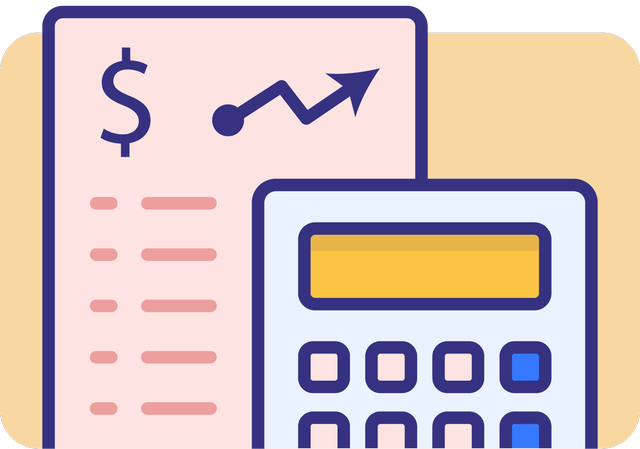What is subscription tax — and who has to pay?
In Luxembourg, investment funds pay something called the subscription tax — or “taxe d’abonnement.” It’s not charged to individual investors, but directly to the fund itself.
This tax applies to UCIs governed by:
- The law of 17 December 2010 on undertakings for collective investment.
- The law of 13 February 2007 on specialised investment funds (SIFs).
- The law of 23 July 2016 on reserved alternative investment funds (RAIFs).
It’s calculated based on the fund’s net asset value (NAV) and must be paid quarterly. The authority in charge: Luxembourg’s Administration de l'enregistrement, des domaines et de la TVA (AED).
Subscription tax Luxembourg: how much is it?
There are several tax rates, depending on the structure of the fund.
| Fund Type | Subscription Tax Rate |
| Standard UCIs (Part I & II of 2010 Law) | 0.05% |
| SIFs and RAIFs | 0.01% |
| Money market funds | 0.01% |
| UCIs reserved to pension schemes | 0.00% |
| Funds investing only in other taxable UCIs | 0.00% |
| ESG-qualified UCIs (partial exemption) | 0.01% or lower |
Funds aimed at pension schemes are fully exempt. RAIFs structured as limited partnerships (without legal personality) are also treated like SIFs — and benefit from the reduced rate.
How it’s calculated (with example)
The tax is calculated on the average net assets during a quarter. The formula looks like this:
NAV × Rate × 0.25 = Quarterly Tax
The fund files its return electronically via the eCDF platform and pays no later than the 20th day after the end of the quarter.
Who can apply for exemptions or lower rates?
There are a few ways funds can pay less — or nothing at all.
- Funds set up exclusively for pension purposes: fully exempt.
- ESG (environmental, social, and governance) investment funds: potentially reduced to 0.01%, if they meet the right screening criteria.
You can find official guidance on this in the Deloitte summary.
If you need help with filings, EasyBiz offers dedicated tools for regulatory and accounting support. See our accounting service for more.

Expert Accounting Help | EasyBiz
Payroll services and accounting from €90. Expert team ready to help.
Learn moreHow does subscription tax differ from other Luxembourg taxes?
Unlike most taxes, which are profit- or transaction-based, the subscription tax is based solely on the fund’s NAV. It’s more of a “maintenance cost” for operating an investment vehicle in Luxembourg.
It doesn't depend on profits. Even if your fund makes no returns, you’ll still owe the tax. That makes it predictable — helpful for planning — but also less forgiving for smaller or underperforming funds.
Here’s how it compares:
| Tax Type | Applied To | Paid By | Rate |
| Subscription tax | UCIs (investment funds) | The fund | 0.01% – 0.05% |
| Corporate income tax | All companies (incl. funds) | Legal entities | ~24.94% combined |
| Net wealth tax | Companies with assets | The company | 0.05% – 0.5% |
| VAT | Sales of goods/services | The seller | Standard: 17% |
The subscription tax is unique to Luxembourg’s fund system. For other types of businesses, you’ll want to check our guide to tax compliance in Luxembourg.
Filing and payment: how it works
Filing is fully digital. All reports must go through eCDF — Luxembourg’s secure tax portal, which is the country’s standard interface for all corporate tax filings. Fund administrators must be registered and authorised to access this platform. Most reporting is managed by professional firms or designated agents who are familiar with eCDF workflows.
To file, your fund (or tax agent) needs authorised access to the system.
Here’s the timeline:
- Quarterly reporting
- Deadlines:
- Q1 (Jan–Mar): pay by 20 April
- Q2 (Apr–Jun): pay by 20 July
- Q3 (Jul–Sep): pay by 20 October
- Q4 (Oct–Dec): pay by 20 January
Payments go to the Administration des contributions directes (ACD) via bank transfer.
Important: late filings = automatic penalties and interest. If you’re running a fund, keep a strict calendar.
What fund managers should keep in mind
If you’re managing a UCI — or thinking of launching one — here’s what you should do:
- 🔎Check if your fund is eligible for reduced rates or exemptions (especially ESG status)
- ⚠️Track NAV accurately — mistakes here can lead to overpayment or underpayment
- ⏰Don’t miss deadlines — late reports can result in avoidable fines
- 💡Get support from local experts who know the ins and outs of eCDF
Still exploring your options? You might want to check this: Can a foreigner start a business in Luxembourg.
Conclusion
For Luxembourg-based funds, the subscription tax is part of the cost of doing business. While the rates are low, understanding the rules — and acting on time — is crucial to avoid penalties.
There’s also an opportunity here. If your fund supports pension schemes or meets ESG standards, you may be eligible to pay 0.00% or 0.01% instead of the standard rate of 0.05%.
And with a platform like EasyBiz handling filings and accounting, staying compliant becomes much simpler.



